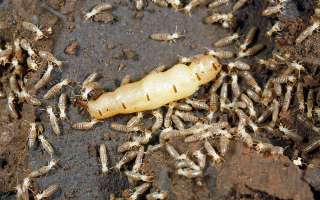Science magazine for children: Packed with science stories, science facts, science features, and other science learning resources for children. Discover the known, the unknown, and little-known facts in our science articles. Learn the how and why of everyday things and explore rare and exotic living species.
358 items in this section. Displaying page 11 of 36
The Deadly King Cobra
Belonging to the family Elapidae, the name Cobra is popularly applied to African and Asian snakes that are capable of spreading long ribs in their necks into a hood when threatened. There are six species of cobras: the Naja, the south African ringhal (Hemachatus), king cobra (Ophiophagus), water cobra (Boulengerina), tree cobra (Pseudohaje), and shield-nose cobra (Aspidelaps). The Deadly King Cobra [Illustrations by Amarjeet Malik] The king cobra or Hamadryad holds a record length of 5....
How do Animals Camouflage?
Remember the last time you played hide and seek. You hid behind a bush while your friend tried to find you. If you were wearing a green dress, the chance of you being seen was automatically reduced as you could be mistaken for a bunch of leaves. Hide and seek is a very old game and it seems human beings are not the only ones to play it. Small fish use the tactics of the game to hide from bigger ones, while moths and butterflies use them to hide from birds and other attackers....
Treaty on Global Warming
In the last week of July 2001, representatives from 178 countries met in Bonn, Germany, for something that is very crucial to their future and the very survival of our planet. They signed a historic agreement that promises to fight global warming. This is the first international treaty of its kind that seeks to check the excesses of human development at the cost of the environment – and the planet itself. Location and date marker for glacier in Jasper National Park in Canada....
The Truth about Zoos
Last week we carried a piece about the relevance of zoos as the last refuge of endangered species. But in India it appears that zoos should be the last place for animals of any sort, let alone the endangered variety. It is no secret that most Indian zoos are in a bad state. Although zoos claim to educate people and preserve species, Indian zoos do neither. Most zoo enclosures are quite small, and labels provide little information....
How Is Jelly Formed?
Had a good dinner? Now how about some cool custard with jelly on the side for dessert? Doesn’t the jelly look inviting, a transparent red-coloured blob sitting pretty on the plate, making you long to dig your spoon into it? Called Jell-O in the United States of America, jelly changes shape with the change in temperature. It stays sets at room temperature, which is between 0 degrees and 20 degree C. Warm it to about 27 degree C and watch it disintegrate into a watery mixture....
How Lizards Defy Gravity
Lizards slithering up walls or dangling precariously from overhead lights are a common sight in tropical countries. These slimy creatures zipping up walls are called geckos. They are the only lizard species that make any sound, other than hissing — in fact they make a loud clicking noise that sounds like “gecko”, hence the name. Recent studies show that the gecko’s ability to cling on to surfaces could well lead to the creation of the world’s first non-sticky, self-cleaning adhesive!...
Why are Zebras Striped?
As a child I was always full of questions. I remember asking my parents why zebras were striped or why did giraffes have such a long neck. Most of the time the answers were elusive and I used to be very irritated. I could never get the right answer to satisfy my curiosity. I now realize why my parents could not give me a concrete answer. You see I happened to be in the same dilemma when my three-year-old daughter asked me the same question!...
Why Do Horses Need Shoes?
Clip-clop, clip-clop goes a horse on the road. If you look carefully you will see that it walks on the tips of its toes – like a ballet dancer. Walking on tiptoe for a long time is difficult for us, but horses find it the easiest thing to do. The foot of a horse is divided into a toe with a broad tip. While other animals have nails and claws, the horse has a hoof surrounding the toe....
Elevator Physics
You get into an elevator (or a lift, as we sometimes call it) and for a second or two, just as the elevator moves down, we feel weightless. On the other hand, if we go up in an elevator, we suddenly feel heavier just as the elevator lurches upwards. To understand this feeling of weightlessness, we need to understand a few basic things first. Mass: The amount of matter that constitues us results in our mass....
Which Insects Live the Longest?
Take a look around. Which insects do you see? A fly sitting on your computer screen, a mosquito buzzing in your ear just as you drop off to sleep, a butterfly flitting about in the garden outside, or how about the ants that made off with the remains of a dead moth? Most of the insects we see around us have rather short lives. A few hours, a few days, that’s about how long most insects last....









